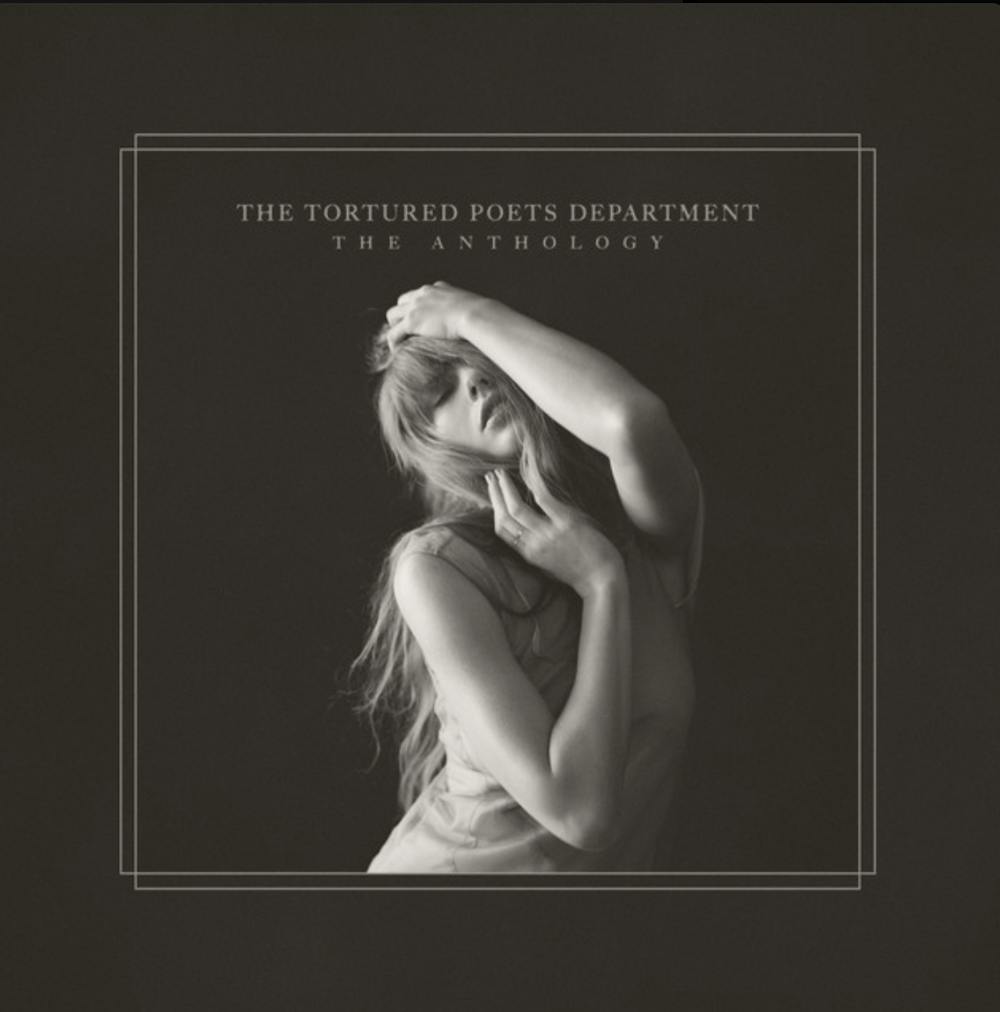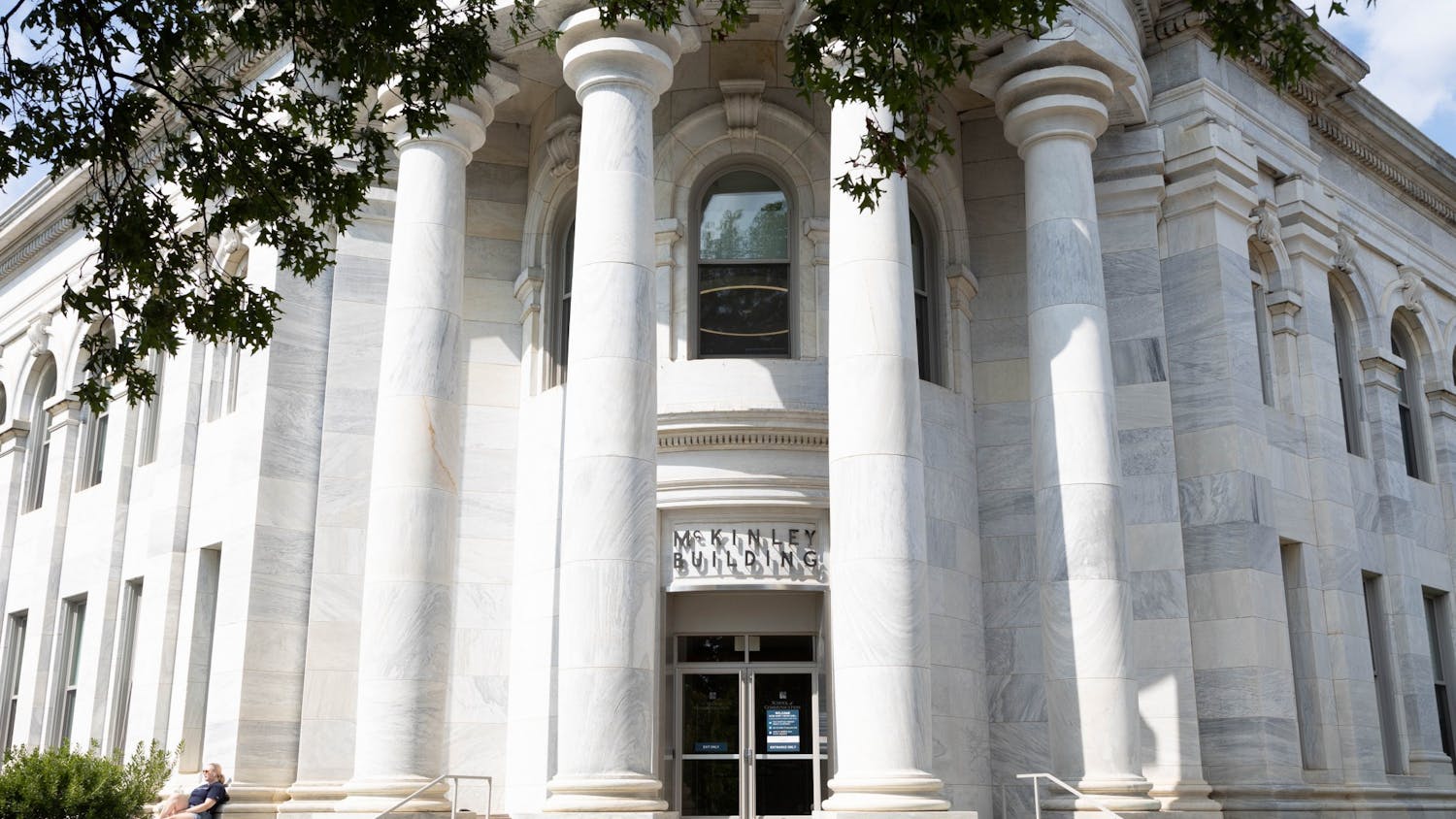Taylor Swift is giving jigsaw a run for his money with her music release methods.
At midnight on April 19, Swift put out her 11th studio album, “The Tortured Poets Department.”
Following wide speculation and Swift’s usual scavenger hunt of album release clues (a countdown appeared on her Instagram as soon as TTPD dropped), Swift dropped another 15 songs at 2 a.m., this time in an extension of the album titled “The Tortured Poets Department: The Anthology.”
Though both releases are (technically) connected, the two could not feel more different.
Where “The Tortured Poets Department” is a collection of “Midnights”-style pop with the occasional change in tune, “The Tortured Poets Department: The Anthology” feels like a realization of Swift’s full potential — combining the best elements of her “folklore” and “evermore” eras.
Why does Swift continue to put her best work in the back half of her main releases? No one knows.
Following “Midnights” and “Midnights (3am Edition),” “The Tortured Poets Department” gives audiences serious deja vu in their release patterns (and in their comparative qualities).
In reviewing Swift’s latest, it would be a disservice to view the two releases as one album.
Since Swift is so insistent upon splitting her work in two, this review will follow the same method — viewing “The Tortured Poets Department” as one release and “The Tortured Poets Department: The Anthology” as another.
The Tortured Poets Department
In “The Tortured Poets Department,” Taylor Swift provides listeners with one dilemma — she can do it with a broken heart, but can she do it without synth?
Primarily produced by Jack Antonoff, Aaron Dessner and Swift herself, TTPD continues the sound Swift embraced on “Midnights” while putting a few new spins on the formula. Tracks like “But Daddy I Love Him,” “So Long, London” and “loml” stand out as some of the best on TTPD, but the rest of the songs fall flat in comparison.
When examining “The Tortured Poets Department,” a large part of the album’s issue seems to fall in the similarities between songs. Antonoff and Swift’s insistence on incorporating synth into most (if not all) TTPD tracks results in an ultimately redundant sound, with songs consistently building to something that could be great but always seems to settle for good.
The production of TTPD might be remarkable for an up-and-coming artist, but Swift has established herself far beyond that and leaves listeners wondering why she keeps returning to such a simple formula.
This problem is perhaps best exemplified in tracks such as “Who’s Afraid of Little Old Me?” and “My Boy Only Breaks His Favorite Toys.” Both songs boast interesting concepts but are ultimately muted by simplistic production.
It feels like Antonoff is dangling the production of TTPD over listeners — the album teases audiences into thinking Swift will travel somewhere new with TTPD’s sound, only to return to the exact same place she started.
Even collaborative tracks such as “Fortnight (feat. Post Malone)” and “Florida!!! (feat. Florence + The Machine)” feel stifled by the repetitiveness of this album.
“Florida!!!” in particular stands out as a frustrating track, if only because Swift and Florence work so well together. The introduction of backing vocals and steady thump of drums throughout the chorus make this song pop on TTPD. While it’s definitely a highlight of the album, it still holds the potential for something much greater.
Beyond TTPD’s shortcomings, there is, admittedly, some good here as well.
Previously mentioned tracks, such as “But Daddy I Love Him,” call back to Swift’s roots in the best way, this time with a sound reminiscent of Swift’s “Fearless” era. Beyond composition, the song succeeds in its narrative lyricism and features cheeky lines like “‘I’m havin’ his baby’ / No, I’m not, but you should see your faces.”
“The Smallest Man Who Ever Lived” is another highlight of TTPD, where Swift cleverly asks listeners if someone could “give a message” to the smallest man who ever lived while delivering that message herself. The track is a thoughtful takedown of the man in question, though it’s the ending crescendo that truly steals the show.
Despite the highlights of “The Tortured Poets Department,” the good feels few and far between, with the great being even further.
Swift has gone through so many musical evolutions that it makes this album even more frustrating in comparison to the rest of her work — listeners know she can do better, so why doesn’t she?
It’s “The Tortured Poets Department: The Anthology” that seems to answer this question. Where TTPD’s synth-centered production leaves listeners yearning for something more, “The Anthology” takes a complete 180 from the first half of this project.
The Tortured Poets Department: The Anthology
If Aaron Dessner’s production feels stifled in the first half of TTPD, it certainly shouldn’t here.
“The Tortured Poets Department: The Anthology” is a refreshing change in tune from “The Tortured Poets Department.” Where TTPD saw Swift more or less remaining in her “Midnights” sound, “The Anthology” sees Swift pulling the best from records like “folklore” and “evermore,” experimenting with (thankfully) more than one sound and giving some of her best lyricism to date.
In “The Anthology,” listeners are immediately pulled in with tracks such as “The Black Dog,” “The Albatross” and “How Did It End?” Primarily produced by Dessner (with the exception of Antonoff’s production credit on “The Black Dog”), these songs feel like some of Swift’s most mature work and hold audiences’ attention with intricate lyricism and unique instrumentation.
While “The Anthology” certainly feels like a fully realized version of Swift and her musical abilities, that’s not to say it’s all depressing music either.
“So High School” and “thanK you aIMee” are delightfully playful on this record, both in production and lyricism (especially when looking at the capitalized letters of “thanK you aIMee”). Each gives listeners a fresh sound that breaks up “The Anthology” and helps keep the songs distinct from one another.
Beyond the more tongue-in-cheek tracks on “The Anthology,” Swift also brings a dreamier sound to songs like “I Hate It Here” and “I Look in People’s Windows.” Both are produced by a mix of Swift, Antonoff and Dessner, as well as Patrik Berger on “I Look in People’s Windows.” Their collaborative efforts seem to work best here, bringing out a side of Swift that could stand to shine more often.
Yet beyond the (many) highlights of this album, perhaps nothing can top the three-track run of “The Prophecy,” “Cassandra” and “Peter.”
Each produced by Swift and Dessner, these songs feel like a pinnacle of Swift’s lyricism and musical ability — pulling inspiration from everything ranging from Greek mythology to Peter Pan and even other artists (“Cassandra” seems to have a keen appreciation for Lana Del Rey’s instrumentation in “Paris, Texas”). Working back to back, the three flow into each other beautifully and show the more poetic sides of Swift that fans have come to love.
“The Anthology” comes to a fitting end on “The Manuscript,” a track where Swift reflects on her previous relationship in the form of a manuscript, recalling and rereading the good days of the affair and the bad, before realizing that the story “isn’t mine anymore.”
It’s in concluding “The Tortured Poets Department: The Anthology” that Swift seems to come full circle — a narrative woven through multiple sounds (some better than others) and closing itself off on a note that leaves listeners satisfied.
Though “The Anthology” is certainly a welcome addition to “The Tortured Poets Department,” the project leaves audiences asking what exactly Swift is trying to accomplish here.
Where one half of “The Anthology” feels like an evolution, the other feels like stagnation.
In releasing this project, it seems like Swift wants the best of two worlds. Yet audiences can’t help but wonder — does she really need both?
This article was edited by Marina Zaczkiewicz and Abigail Turner. Copy editing by Luna Jinks, Isabelle Kravis, Leta Lattin and Charlie Mennuti.





